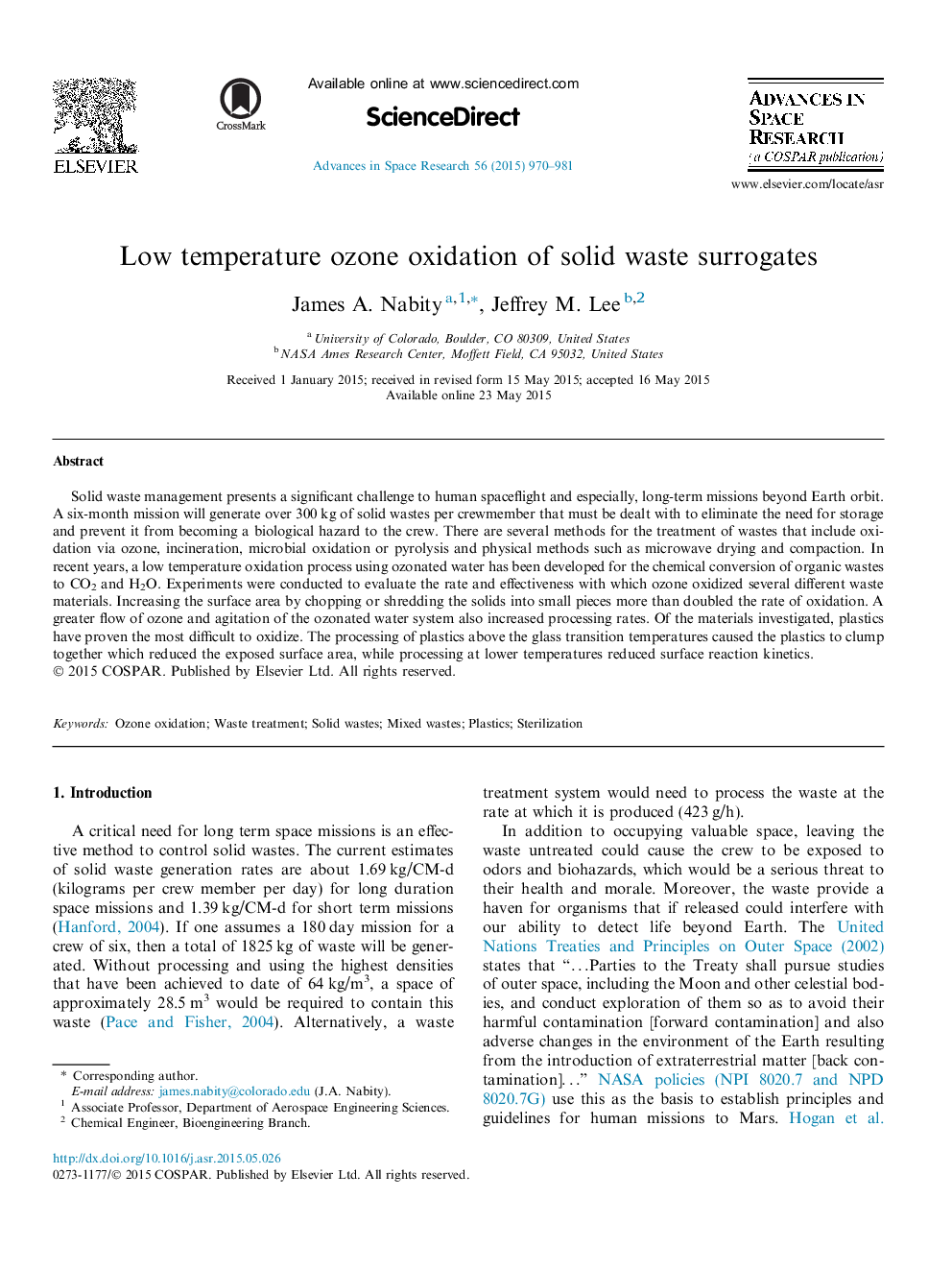| Article ID | Journal | Published Year | Pages | File Type |
|---|---|---|---|---|
| 1763831 | Advances in Space Research | 2015 | 12 Pages |
Solid waste management presents a significant challenge to human spaceflight and especially, long-term missions beyond Earth orbit. A six-month mission will generate over 300 kg of solid wastes per crewmember that must be dealt with to eliminate the need for storage and prevent it from becoming a biological hazard to the crew. There are several methods for the treatment of wastes that include oxidation via ozone, incineration, microbial oxidation or pyrolysis and physical methods such as microwave drying and compaction. In recent years, a low temperature oxidation process using ozonated water has been developed for the chemical conversion of organic wastes to CO2 and H2O. Experiments were conducted to evaluate the rate and effectiveness with which ozone oxidized several different waste materials. Increasing the surface area by chopping or shredding the solids into small pieces more than doubled the rate of oxidation. A greater flow of ozone and agitation of the ozonated water system also increased processing rates. Of the materials investigated, plastics have proven the most difficult to oxidize. The processing of plastics above the glass transition temperatures caused the plastics to clump together which reduced the exposed surface area, while processing at lower temperatures reduced surface reaction kinetics.
